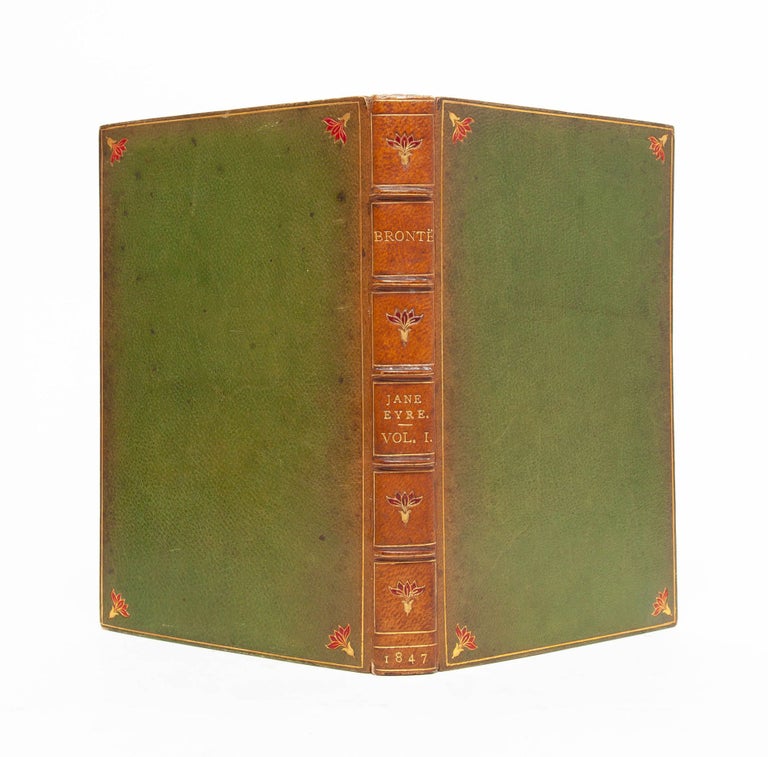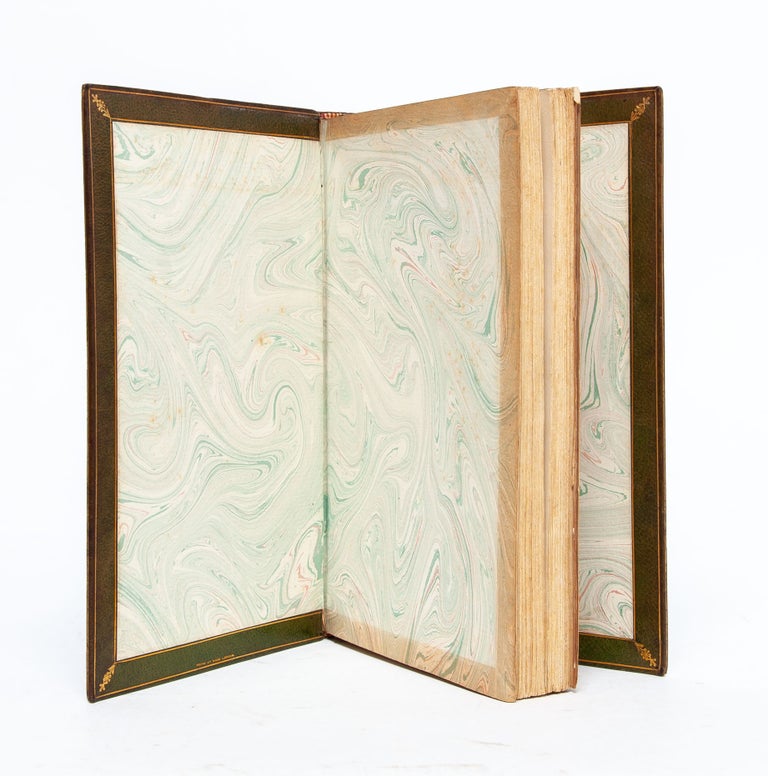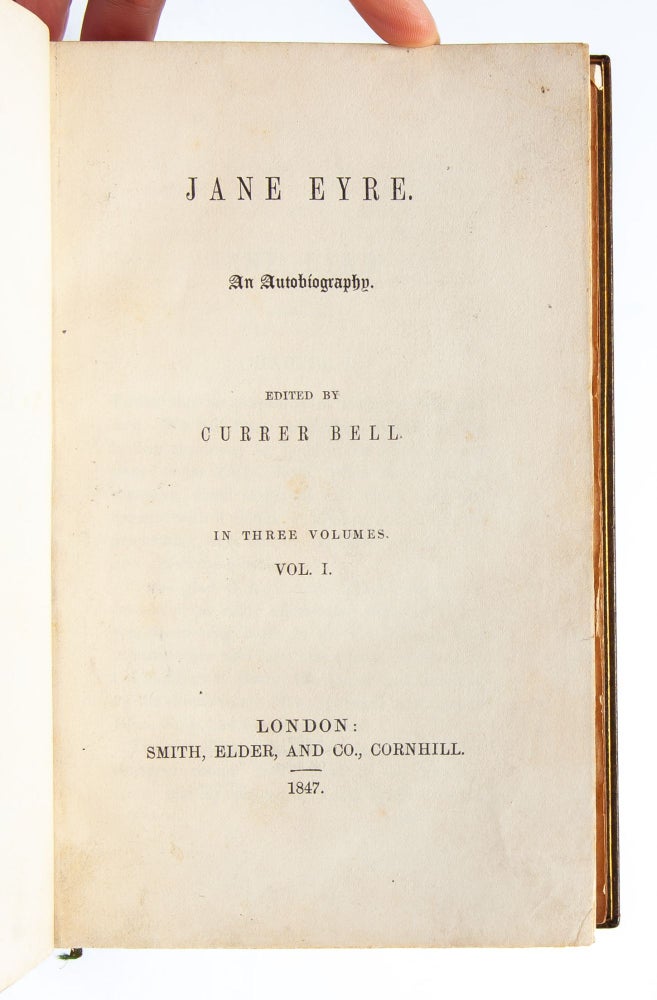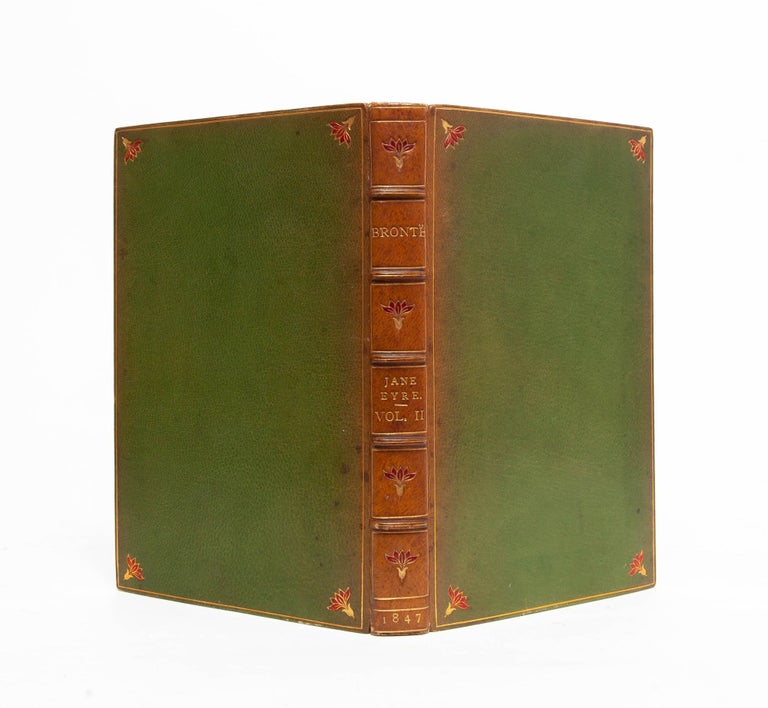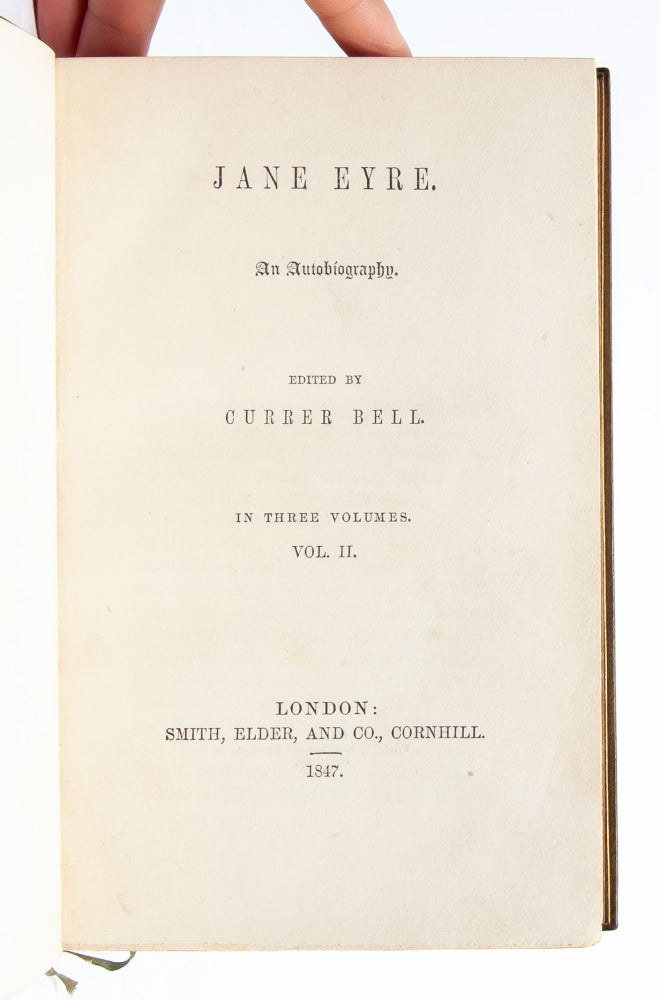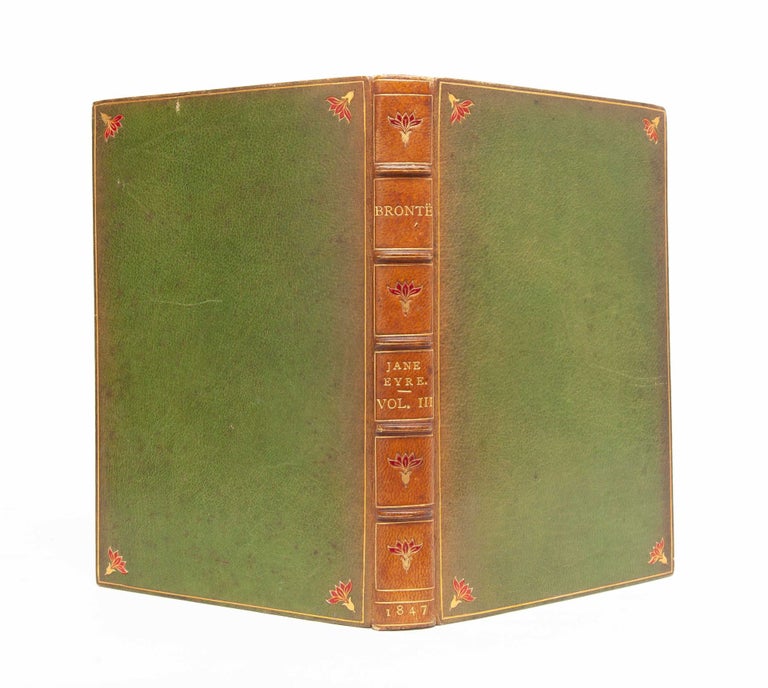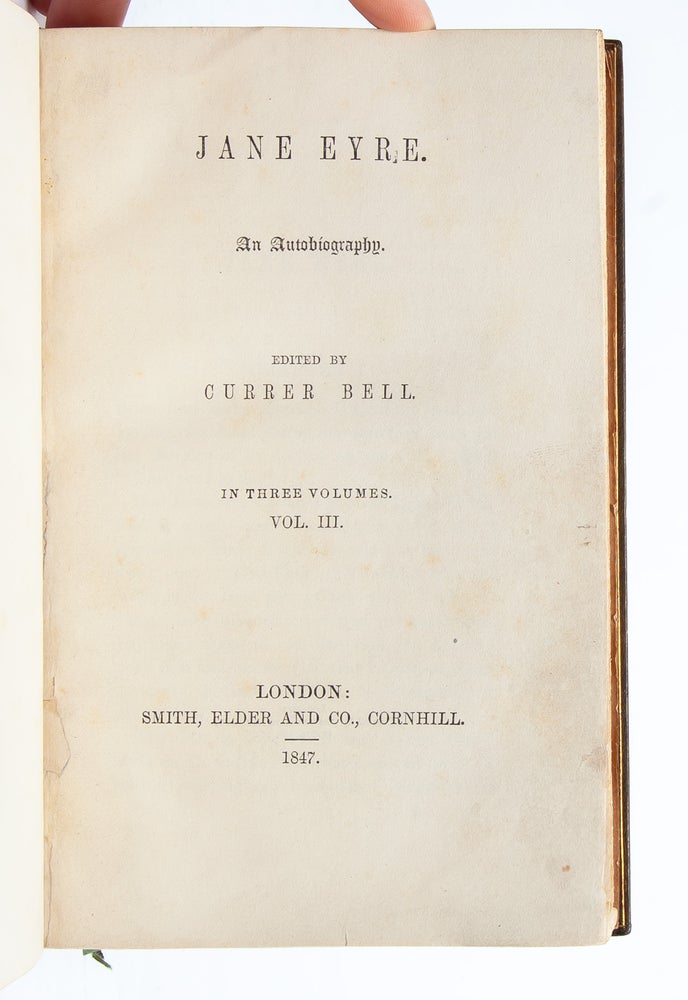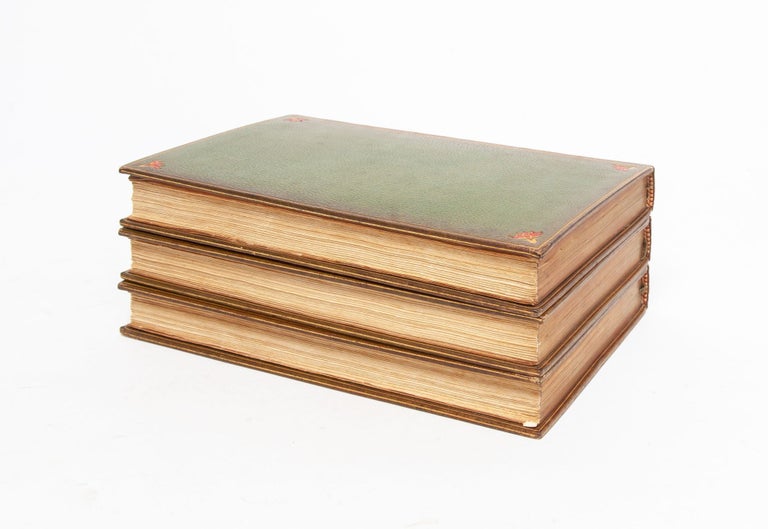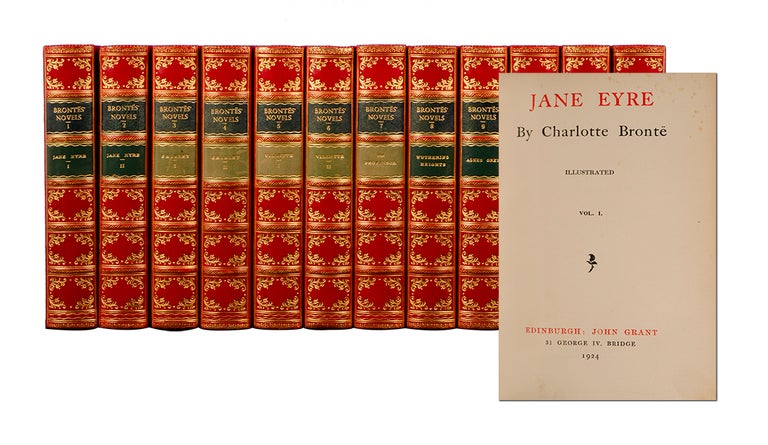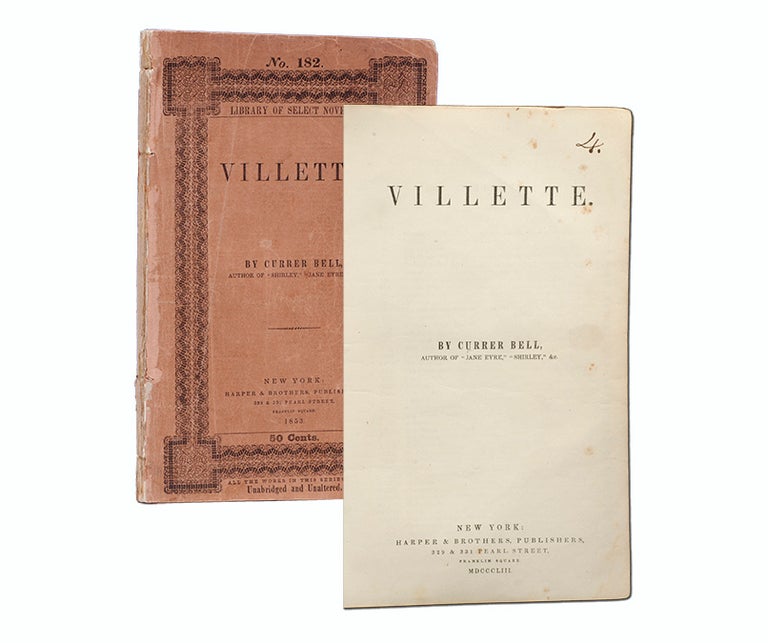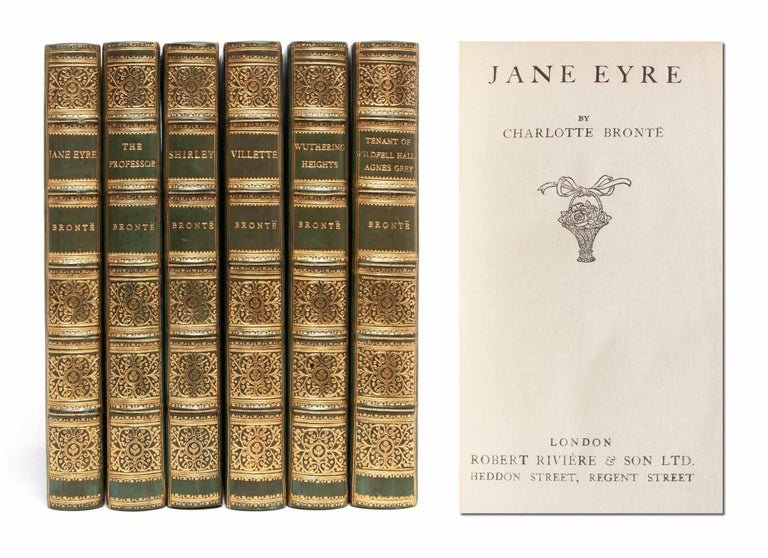Jane Eyre (in 3 vols.)
London: Smith, Elder & Co., 1847.
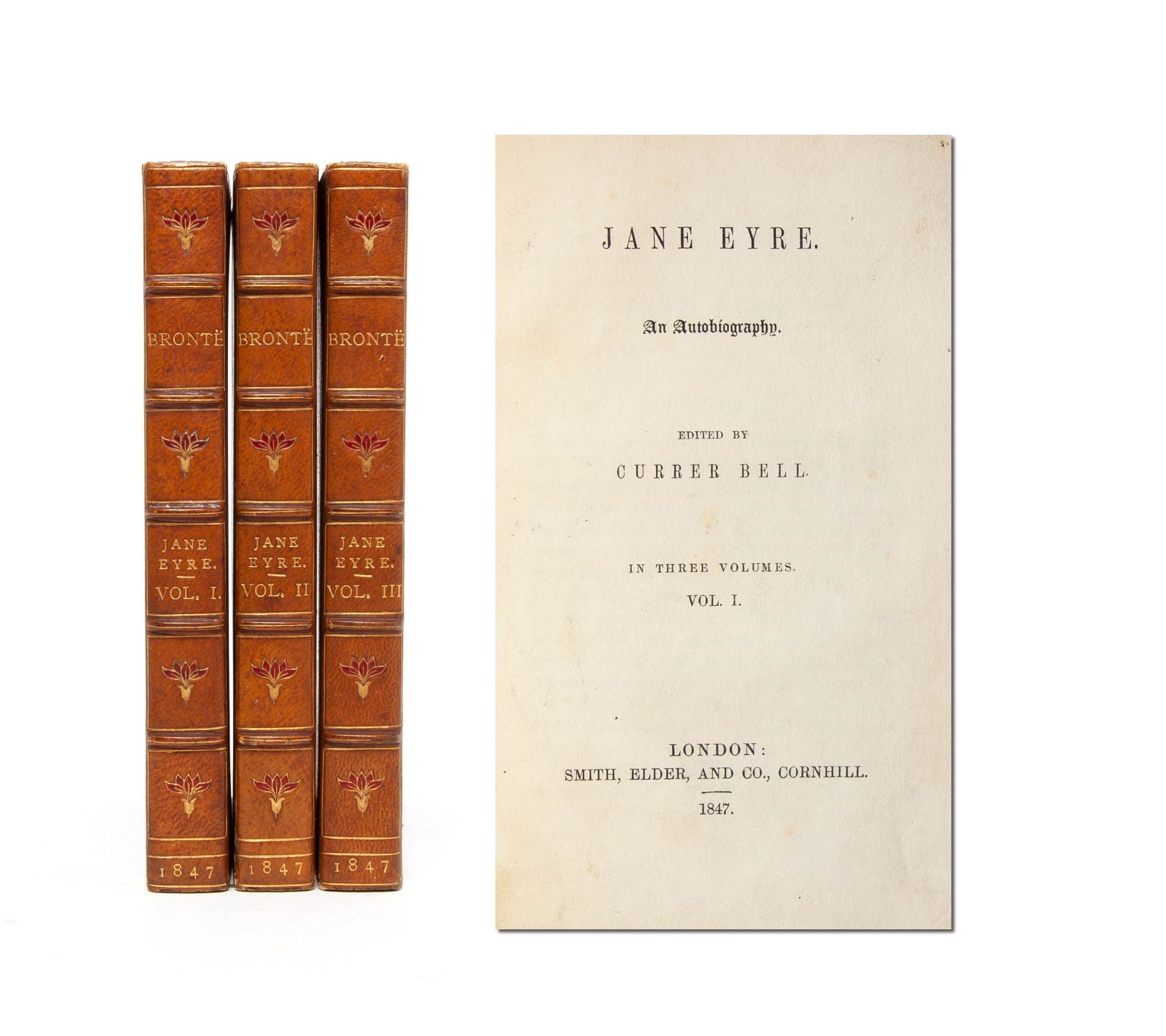

Jane Eyre (in 3 vols.)
London: Smith, Elder & Co., 1847. First edition. Bound in full green pebbled morocco by Wood, cover with red floral devices and single gilt rule, spines similarly decorated in compartments with raised bands (uniformly faded to brown), t.e.g.; foxing to endpapers and contents, chiefly confined to front and end sections, with repairs to the gutter of the title page of vol. 3 With half-titles; [iv] 304; [iv] 304; [iv], 311, [1] pp. 3 vols. 8vo (7-1/2 x 4-3/4 inches; 190 x 120 mm.) First edition, without publisher's adverts or notice for the Calcutta Review found in some copies.
The first published novel by the Brontë sisters, in a small edition of about 500 copies. It was immensely popular and enthusiastically received. Readers and critics reacted to it passionately and dividedly, and it was speculated that the author was a woman. It was republished the following year, dedicated to Thackeray, with a new preface, and a third edition quickly followed. "Jane Eyre's impassioned individualism and personal acts of rebellion against authority and social convention were seen as vigorous and powerfully original, but also as alarmingly analogous to political ferment of the time" (ODNB). One of the first novels to master the first-person voice of its heroine in its full expression, it opened the door to the interiority of the novels of Joyce, Proust, and Woolf, who wrote about the novel in The Common Reader: "As we open Jane Eyre once more we cannot stifle the suspicion that we shall find her world of imagination as antiquated, mid-Victorian, and out of date as the parsonage on the moor, a place only to be visited by the curious, only preserved by the pious. So we open Jane Eyre; and in two pages every doubt is swept clean from our minds. .The writer has us by the hand, forces us along her road, makes us see what she sees, never leaves us for a moment or allows us to forget her. At the end we are steeped through and through with the genius, the vehemence, the indignation of Charlotte Brontë."
Parrish. 87-89. Wolff 826a. Sadleir 846a. Ashley I:72. Grolier, English 83. (Item #5040)

